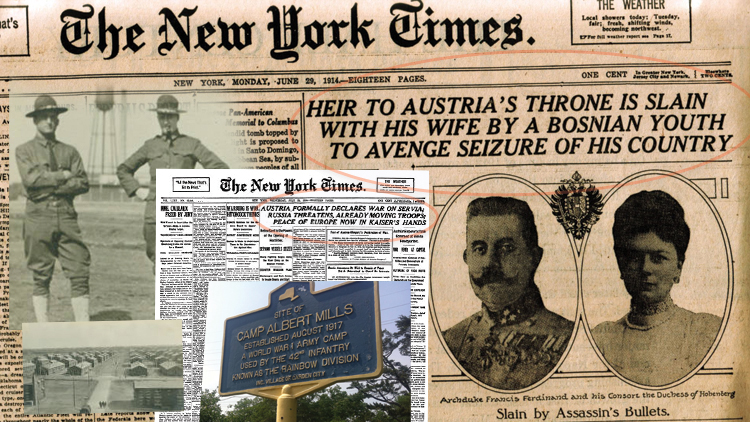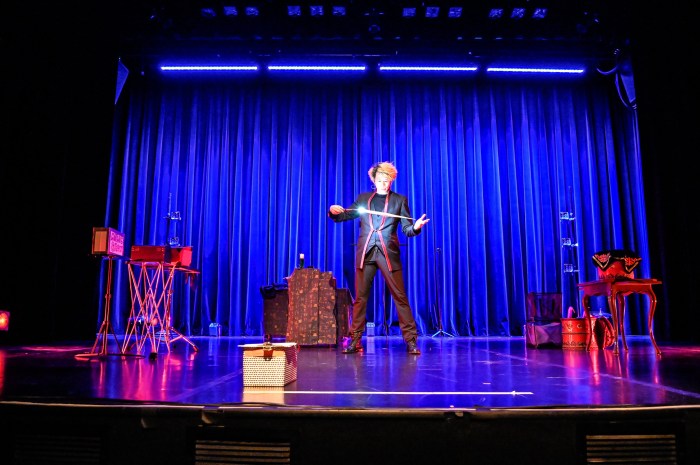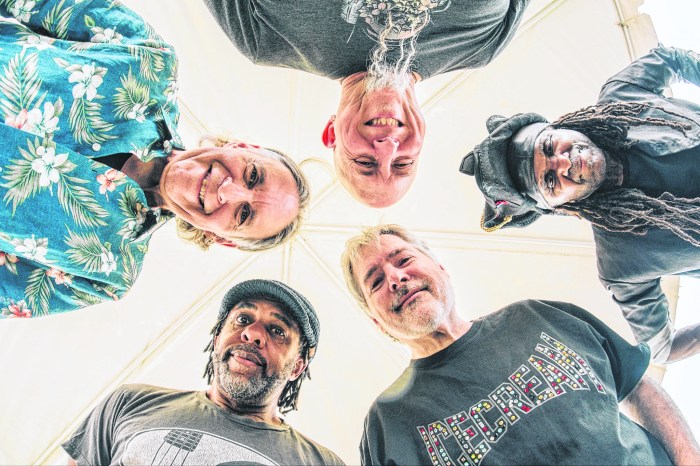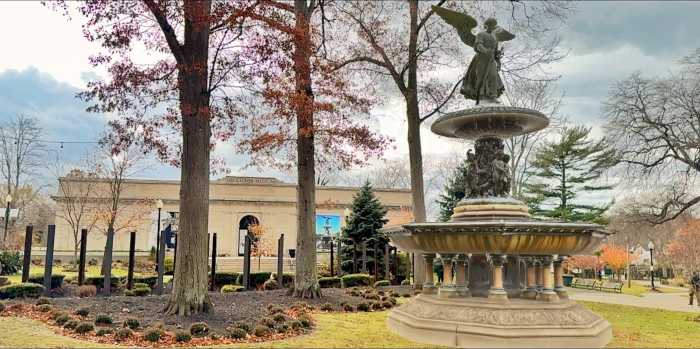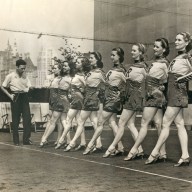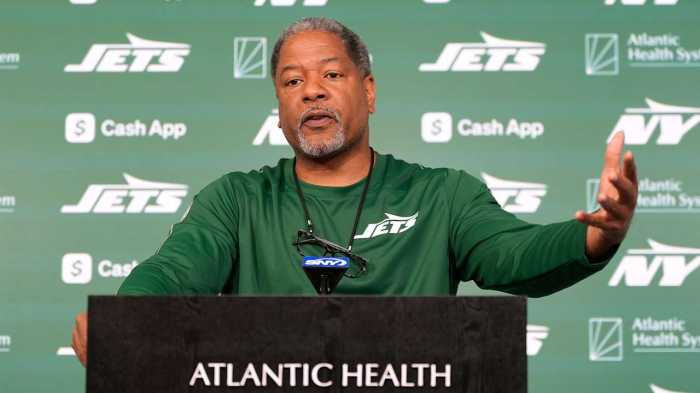When future U.S. President Harry Truman arrived at Camp Mills on Long Island at the end of World War I after fighting in Europe, the then-artillery officer sent a telegram to his wife-to-be, Bess Wallace, about how glad he was to be back on the homefront.
“ARRIVED IN CAMP MILLS EASTER AFTERNOON,” the telegram read. “HAVE BEEN EATING PIE AND ICE CREAM EVER SINCE. WIRE ME HERE USUAL ADDRESS. HOPE TO BE IN FUNSTON SOON. NEW YORK GAVE US A GRAND WELCOME. GOD’S COUNTRY SURE LOOKS GOOD. HARRY.”
Now-defunct Camp Mills, which also hosted the likes of General Douglas MacArthur and The Great Gatsby author F. Scott Fitzgerald, has since been redeveloped by colleges, offices and malls. But, local historians are reflecting upon the former military base for the 100th anniversary of the start of what was then dubbed “The War to End All Wars.” Saturday marks a century since the assassination of the Archduke Franz Ferdinand of Austria, which sparked the First World War.
“Right after the beginning of the war, Mitchel Field and Long Island were centers of activity for soldiers who were training to fight this war,” said Andrew Parton, the executive director of the Cradle of Aviation Museum in Garden City. “Long Island had an instrumental role in early aviation and the use of aviation in warfare for the first time.”
Camp Mills was a National Guard training site that was established nearby what later became Mitchel Field, a former U.S. Air Force base, where the museum now sits. Mitchel Field and nearby Roosevelt Field were two of the largest airbases in the nation during WWI—the first war in which aircraft were used in combat. The First Aero Squadron of the U.S. Army—the nation’s first military aviation unit—sailed for England from Mitchel Field during WWI. And military planes were built by the Ordnance Engineering Corporation in Baldwin, the Lawrence Sperry Aircraft Company and the Breese Aircraft Corporation—both in Farmingdale.
More than 80,000 soldiers came through Camp Mills, making it a major embarkation point during WWI, which the US didn’t enter until April 2, 1917 after a German submarine sunk the RMS Lusitania, killing 128 Americans. Troops were also trained at Camp Upton, which is now the site of Brookhaven National Laboratory, before shipping out to fight in Europe. That’s in addition to bases in Huntington and Bay Shore as well as Forts Michie, Terry and Tyler on islands off the East End.
When active, Camp Mills was a crowded city of tents with few amenities, where soldiers had to take precaution to avoid catching the Spanish flu during the epidemic of 1918. It was also the birthplace of the 42nd Infantry Division—the first of its kind, composed of National Guard regiments from 26 different states—known for its distinctive rainbow insignia.
In his memoir, A Doughboy with the Fighting 69th, Albert M. Ettinger recalls his experiences as a soldier in the “Rainbow” Division staying at Camp Mills. He witnessed the racial tension between the 4th Alabama Regiment and the African-American 15th New York National Guard Regiment. It turned out that the fighting wasn’t always reserved for the battlefield.
“Our boys from the 69th received those of the 15th New York as buddies,” Ettinger wrote. “Not so the Alabamians. They resented Blacks coming into camp. Hell, they resented us! The first thing you know fights erupted all over the place, and the 69th guys usually stood up for the 15th men and fought alongside them against the Alabamians.”
Camp Mills was abandoned in 1920 after the last troops returned from overseas. The military used Roosevelt and Mitchel fields during World War II before private developers took over the former in the in the ‘50s and Nassau County acquired the latter in the ‘60s.
But, historians are making sure that LI’s WWI past has not been forgotten.
The Long Island Museum in Stony Brook has WWI-era local artifacts on display for an exhibit called “Long Island at War.” The exhibit opened May 23 and will close Dec.28.
“We set up a recreation of a camp barrack, and we have some old uniforms and photos from Camp Upton,” said Julie Diamond, the museum’s spokeswoman.
Telecare is going to rerun a recent episode of “Exploring Critical Issues” dedicated to WWI at 10 p.m. Saturday, 7 a.m. Sunday, 1:30 p.m. Wednesday and 10:30 p.m. Thursday.
“All colleges were expected to be on board when the war started,” Jennifer Fleischner, an Adelphi University professor who discussed the war’s local impact on the show, said. “Adelphi was a women’s college at the time, and while men’s colleges had officer’s training and accelerated courses, women’s colleges had a lot of volunteering, fundraising and [American] Red Cross work.”
The Long Island Skyhawks Club’s annual contest for pre-1919 airplane giant-scale models will commemorate the WWI centenary this year on the club’s field in Eastport from Aug. 1-3.
“We’re expecting to see some British World War I fighter planes and different types of civil planes like the Curtiss Jenny,” Mike Gross Sr., the event’s contest coordinator, said.
More can be learned at The American Airpower Museum at Republic Airport in East Farmingdale and The Cradle of Aviation Museum, which is housed in some of the old Mitchel Field hangars, where exhibits include aircraft flown by WWI soldiers.




